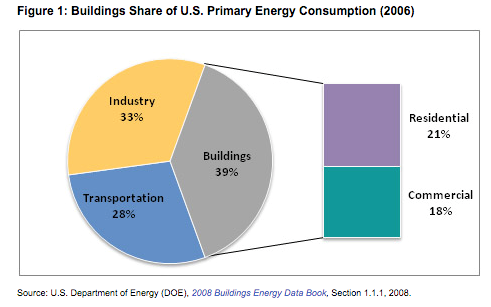What is Measurement & Verification process?
"You can’t manage what you can’t measure” is a great saying to understand why we need measurement and metrics to demonstrate accountability and measure progress.
This is very much applicable to energy performance contracts that are based on “Guaranteed savings”. These guaranteed savings are measured using Measurement and Verification (M&V) techniques.
Implementing M&V strategies in energy performance contracts is a federal requirement for contracts such as the Super Energy Savings Performance Contracts (Super ESPCs). Authorized by the Energy Policy Act of 1992 (EPAct), the Energy Savings Performance Contract (ESPC) program was created to provide agencies with a quick and cost-effective way to finance energy-saving technologies.
The fundamental activities in M&V are measurement of performance and usage, crucial components that drive energy consumption and savings. Other activities include establishing baseline measurements, engineering calculations at the system or component level, analysis of metered data, etc.
Below is an image of how energy savings is driven by performance and usage:

What is M&V used for?
There are several uses of M&V that go far beyond satisfying the law requirements of energy performance contracting. When properly applied, M&V can be used for the following:
1.) Accurately assess energy savings
Today’s commercial and industrial buildings are tasked with operating efficiently in a cost-effective manner with minimal downtime. Utilizing the core functionality of M&V can be used for non-ESPCs purposes as well.
The interesting thing to note is the challenge of measuring energy savings since it represents the absence of energy consumption. Savings are determined by comparing the energy use before and after the installation of conservation measures, making appropriate adjustments for conditional changes.
The “before” is the baseline. The “after” is the post-installation or performance period.
Savings = (Baseline _ Energy − Post _ Installation _ Energy) ± Adjustments
This can be determined by any of the four types of M&V options available. (Options A, B, C and D). The guidelines of these are documented by the leading international energy efficiency M&V protocol.
2.) Monitor equipment performance
Building goals of energy and cost savings can’t be completely realized if the equipment is not installed, monitored and operated correctly. This is important not just during installation but also throughout the life of the equipment and the facility.
Although M&V techniques are primarily used for energy savings and improvement measures, it can also be adapted to establish baseline for operational equipment as well as ongoing measurement to ensure the health of the equipment is optimal.
One of the activities that M&V employs is calculating the operating hours of the equipment and then calculates performance. For example, in the simple case of lighting, performance is the power required to provide a specific amount of light, and use is the operating hours per year. For a chiller (which is a more complex system), performance is defined as the energy required to provide a specific amount of cooling (which varies with load), whereas use is defined by the cooling load profile and the total amount of cooling required.
The other factors they consider are equipment operating schedule and operating loads. The methods to measure the performance of equipment include surveys, inspections, spot measurements, and short-term metering.
Frequent inspections are also conducted to make sure that the M&V monitoring and reporting systems are working properly and that installed equipment and systems are operating as intended throughout the year, allows fine-tuning measures throughout the year based on operational feedback. This would avoid surprises at the end of the year.
3.) Design of green buildings
Green building “refers to both a structure and the application of processes that are environmentally responsible and resource-efficient throughout a building's life-cycle: from planning to design, construction, operation, maintenance, renovation, and demolition.”
The green building design community has discovered that M&V can be used to reduce energy consumption. (A primary goal of environment friendly buildings.)
Monitoring energy equipment and systems would identify faulty equipment and increase efficiency.
“Feedback is part of nature,” says Bill Reed, AIA, of the Integrative Design Collaborative in Arlington, Massachusetts. “Systems respond to external stimuli. M&V is bringing us closer to the way nature works.”
M&V is typically considered during the design phase of the future green buildings. In the short term, it ensures that building’s systems are functioning appropriately. This would be the responsibility of the building’s energy modeler or commissioning agent.
In the long term, this responsibility shifts to the building controls engineers and operators to review continuous improvement that is made possible with the use of M&V when included in the green building tools.
4.) Help environment and climate-friendly initiatives
Residential and commercial buildings account for almost 39 percent of total U.S. energy consumption and 38 percent of U.S. carbon dioxide (CO2) emissions. Nearly all of these greenhouse gas (GHG) emissions from the residential and commercial sectors can be attributed to energy use in buildings.

As green house gas emissions increase, they build up in the atmosphere and affect the global warming and the climate change impact can persist over a long time. This can adversely impact society, plants and animals.
Hence there is an increased focus on reducing these gases and the need for environment and climate-friendly initiatives and the need for sustainable building technology.
M&V process is the only standard that is used across most countries to establish energy efficient building design and hence can be used to determine the impact that energy consumption has on the environment and climate change.
5.) Policy and public expenditure
United Nations Environment Programme ,as part of MCA4climate, is a new initiative providing practical assistance to governments in preparing their climate change mitigation and adaptation strategies.
According to the 2007 international legal climate regime Bali Action Plan, a requirement for all countries was made. This meant that all countries’ climate control plans to be “measurable, reportable and verifiable”.
This would be fulfilled by Measurement, reporting and verification (MRV), a protocol of M&V.
This process of measurement can help national climatic and energy strategies by establishing baselines and helping to identify policies and potentials. The M&V reports are published internationally and can be used to solicit expert advice on improvement.
6.) Reduce and manage risk
The goal of any energy savings project is to guarantee cost and energy savings and reduce the risk of nonperformance at an acceptable level. The risk of handling the uncertainty of the expected savings and the potential financial consequences is the responsibility of both the ESCO (Energy Service Company) and the customer.
Due to the involvement of multiple parties, any project using M&V has to complete the project responsibility matrix. This includes the risk, responsibilities and performance required for the project to be a success.
In addition, this matrix helps identify important project risks, potential implications, mitigation plans and parties responsible for managing it.
Using M&V responsibility matrix would ensure that the selection, application, design, installation and performance of the equipment and the preventive maintenance goals are met.
7.) Demand response for consumer consumption
Demand response programs are programs that provide consumers payment incentives if consumers reduce their consumption during peak periods.
M&V plans can be utilized for optimizing the consumption to avail these benefits. It can also be used to calculate savings utilizing engineering algorithms to determine a baseline from which the savings are derived.
8.) Renewable energy efficiency
The energy needed to run commercial and industrial buildings in the United States produces 19 percent of U.S. carbon dioxide emissions, 12 percent of nitrogen oxides, and 25 percent of sulfur dioxide, at a cost of $110 billion a year. These are mostly generated by fossil fuel.
This has led to alternate energy sources like solar, wind, biomass etc. that come under the term “renewable energy”.
Renewable energy sources are different from regular energy sources since their productivity is directly linked to the amount of energy consumed as they are supplied by request and cannot be produced in excess.
An M&V approach should be carefully structured to consider the generating capacity of the renewable energy source as well as the redundancy processes in place.
This M&V plan would help in providing greater confidence that the benefits of renewable energy investments are actually being realized.
9.) Energy Saving Certificates (ESC)
One of the important goals of commercial building energy efficiency is to reduce the greenhouse gas (GHG) emissions and energy costs. Energy saving certificates (ESCs) is an effective tool for meeting these goals. These certificates are used as a mechanism through which commercial buildings can comply with energy efficiency targets.
The certification requires measurement of energy efficiency savings and that is best done utilizing the Measurement and Verification (M&V) system.
An M&V system for ESCs requires not only the fundamental elements of an M&V system but also include other best practices of where and how cost savings occur and the building equipment and systems they affect.
10.) Align financial capital to energy efficiency projects
A 2009 study conducted by McKinsey identified that 16% of U.S. carbon abatement potential resides in building efficiency. This study proves the fact that building efficiency investments are crucial for long-term sustainability of clean energy.
Tools that help with financial modeling and risk analysis are in demand to justify the costs of the energy efficiency program investments.
M&V is a very effective tool that provides both these reports but also documents energy savings, estimates reduction in energy bills and tracks performance over periods of time.
This provides the credibility required by investors and opens the door for lenders interested in long-term energy efficiency projects.
Conclusion:
With the increasing concern about climate change, greenhouse gas emissions and rising energy costs, M&V is a perfect tool to install. While the federal regulations are met with the fundamental use of M&V, enhanced capabilities of M&V will ensure that the time, money and efforts in M&V process are worth the benefits it provides.




